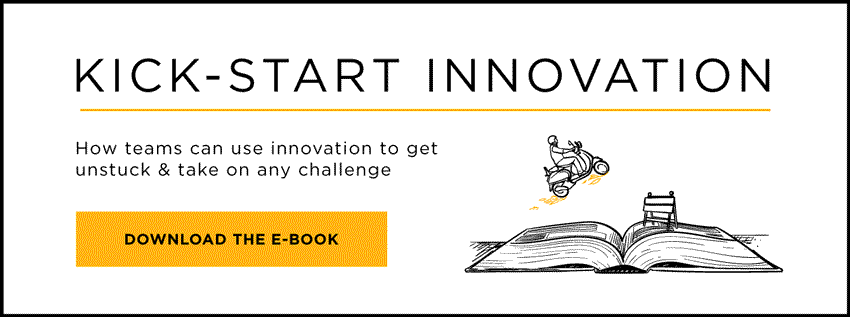What you need to keep in mind if you’re planning to engage your workforces’ creative potential
 Design thinking projects have the potential to generate groundbreaking ideas and help even the most steadfast organizations attack problems in new ways. When companies introduce design thinking into the corporate culture and create space for it to flourish, people understandably get excited — it invites them to use the creative side of their brains to generate audacious ideas, engage with customers, play with concepts, build prototypes and connect with colleagues.
Design thinking projects have the potential to generate groundbreaking ideas and help even the most steadfast organizations attack problems in new ways. When companies introduce design thinking into the corporate culture and create space for it to flourish, people understandably get excited — it invites them to use the creative side of their brains to generate audacious ideas, engage with customers, play with concepts, build prototypes and connect with colleagues.
In our experience, there are several key challenges in implementation that eventually surface in organizations where design thinking is a new concept. Often these challenges erode much needed support for design thinking and can turn bystanders into active skeptics. With advanced knowledge, however, you can help your organization navigate these difficulties and succeed with this powerful methodology.
Challenge #1: “I see innovation projects...they’re everywhere.”
Design thinking can be wildly seductive, and early on, newly trained employees will search for opportunities to use their nascent skills.
However, not every problem warrants a full-blown design thinking project to reach a solution. When clients ask ExperiencePoint when and where they should commence projects, we give them these three simple rules:
-
The problem to be tackled should be challenging and complex with no obvious solution
-
Solving the problem should be meaningful. The solution should deliver immediate value, be seen as important by the team, and/or be a perennial problem that requires attention
-
It should be a human-centered problem that involves some human behavior
A potential project should align with all three of these rules, or the project won’t be a good use of time and resources. So, when an R&D company asked ExperiencePoint if we could help their scientists come up with ideas for new metal alloys, we told them design thinking wasn’t the right fit. While it was an important and complex challenge, there was no human behavior involved.
Similarly, when we had a facilitator summit event on the horizon and had to think about the “welcome package” for our attendees, we knew it was unnecessary to spin up a full design thinking project. While this was a human-centered challenge — and we love to give our team the chance to use their design thinking skills — they had a very limited time window and few resources to get it done.
A Little Goes a Long Way
In both cases, a full-blown design thinking project that involved cross-functional teams, and multiple rounds of interviews, brainstorming, prototyping and feedback didn’t make sense. However, that didn’t mean they couldn’t leverage pieces of design thinking to spark innovative ideas and spur better results.
Employees face daily challenges, and many of these offer opportunities to leverage some elements of design thinking to accelerate creativity, even if they don’t have the time, resources, or need for a full-blown project.
In the case of creating communication materials for the customer summit attendee package, our team brainstormed some big ideas in a single meeting, selected four or five, and rapidly created prototypes before choosing the versions they liked best. It was an abbreviated design thinking approach that helped them come with new ideas, and implement them quickly without investing the time and resources into a longer design thinking project.
These tools can also be used by individuals in their day-to-day work to think more creatively, and to tackle small problems through innovative thinking. Whether it’s having a difficult conversation, or finishing a solo project, these tools are applicable in many facets of an employee’s day.
Encouraging employees to use these tools to solve small challenges helps them harness their creative talents and adopt the language of design thinking, even if they don’t get to participate in a full project every day. It gives them permission to stretch their creative wings, and to innovate in small ways on behalf of the business. This is how you weave design thinking into a company culture and make it part of everyday life.
In the next post, we will explore challenge #2: “Insight Anxiety”...
Learn how to enable innovation skill-building at scale here or download our free ebook Kickstart Innovation: A Guide for Organizations.
Greg Warman is a co-founder of ExperiencePoint, a global designer of experiences that activate the latent energy of an organization’s employees. He believes that when bright, passionate people are given permission and proven tools, there are no limits to the problems they can solve.
Greg and ExperiencePoint have helped organizations like GE, Google, the United Nations, the U.S. Air Force, and Habitat for Humanity pursue innovation and growth through improved human performance. Greg holds a Bachelor of Commerce Honours from Queen’s University in Canada and a Masters of Arts in Learning, Design and Technology from Stanford University.
